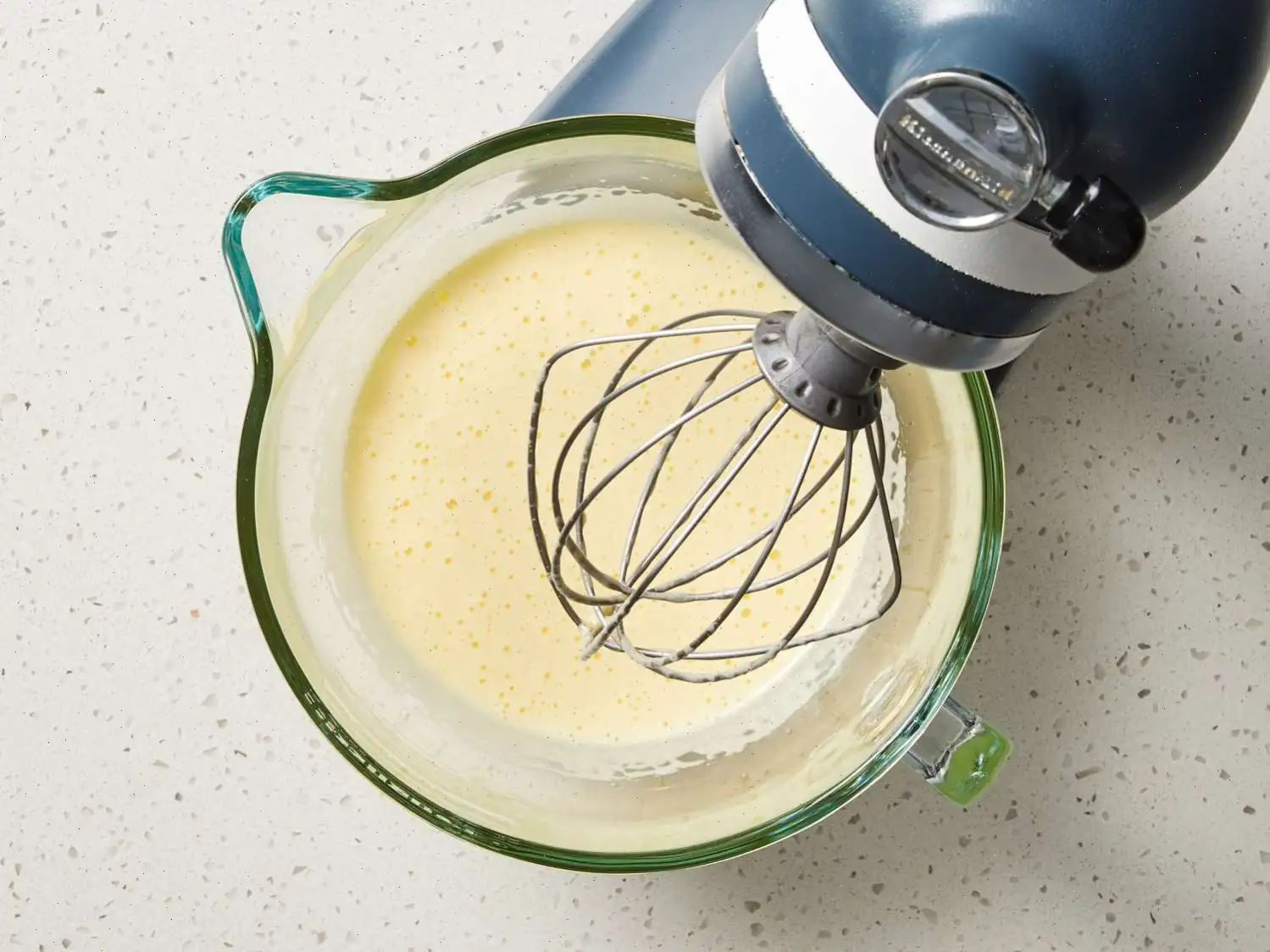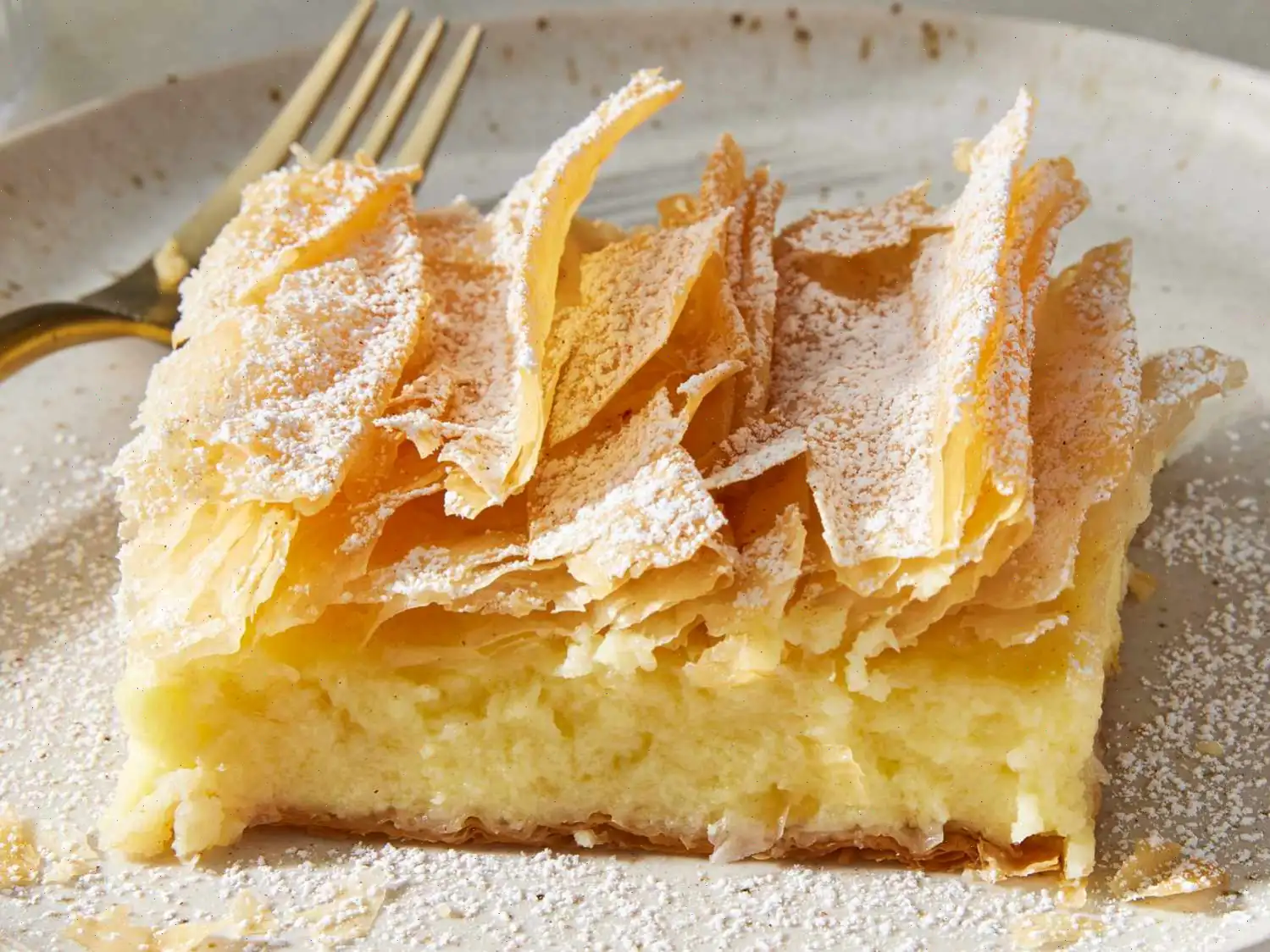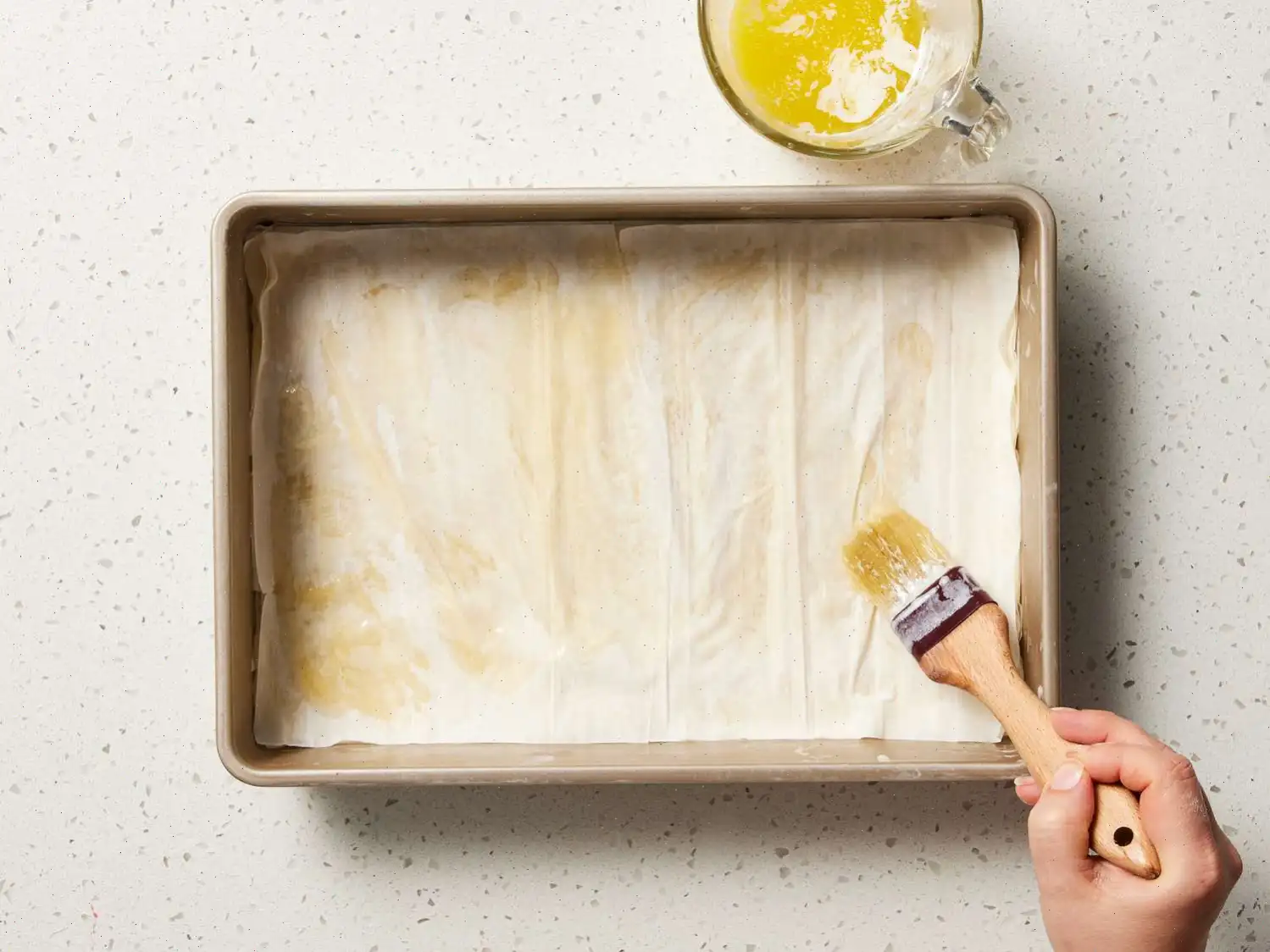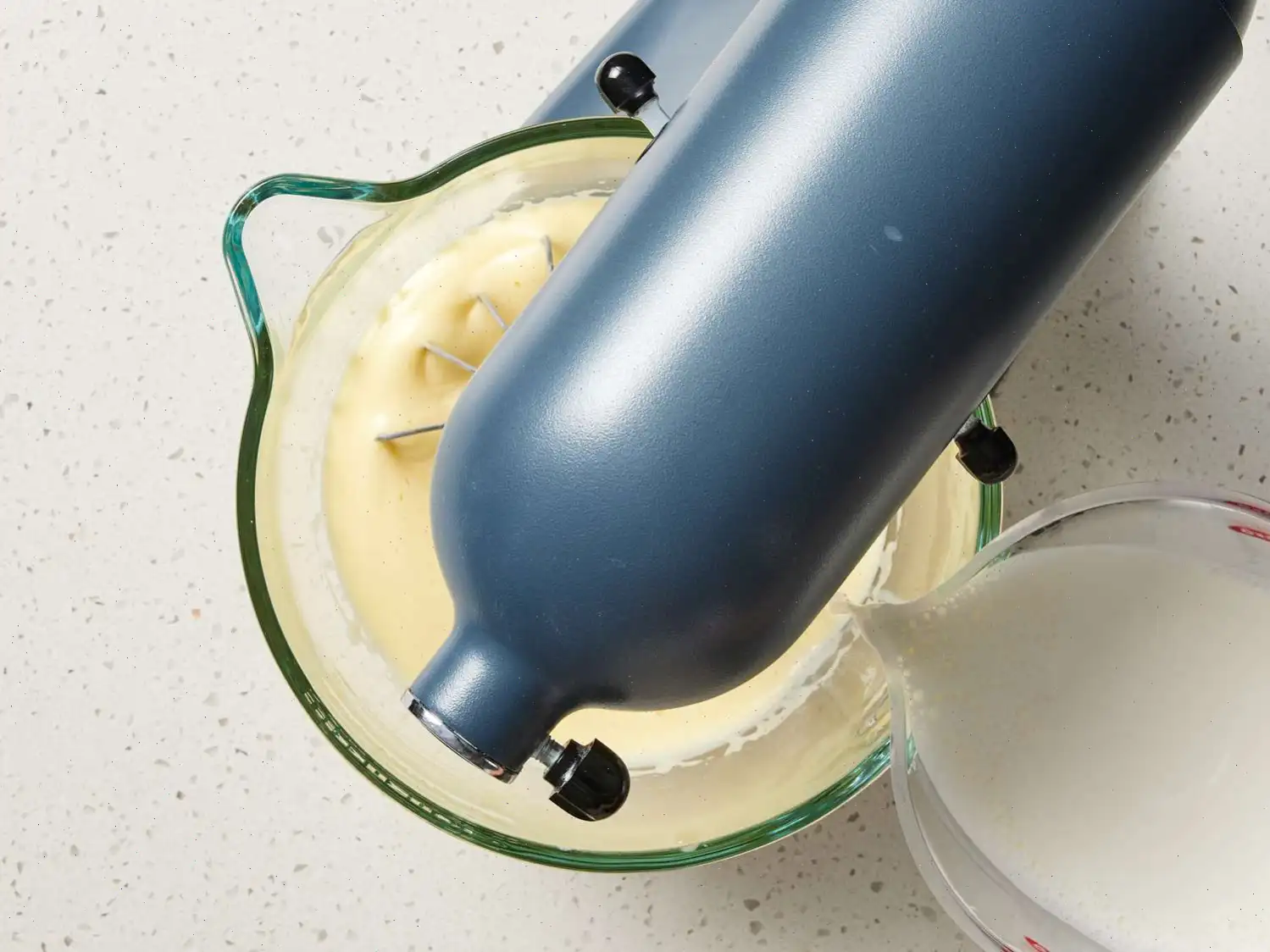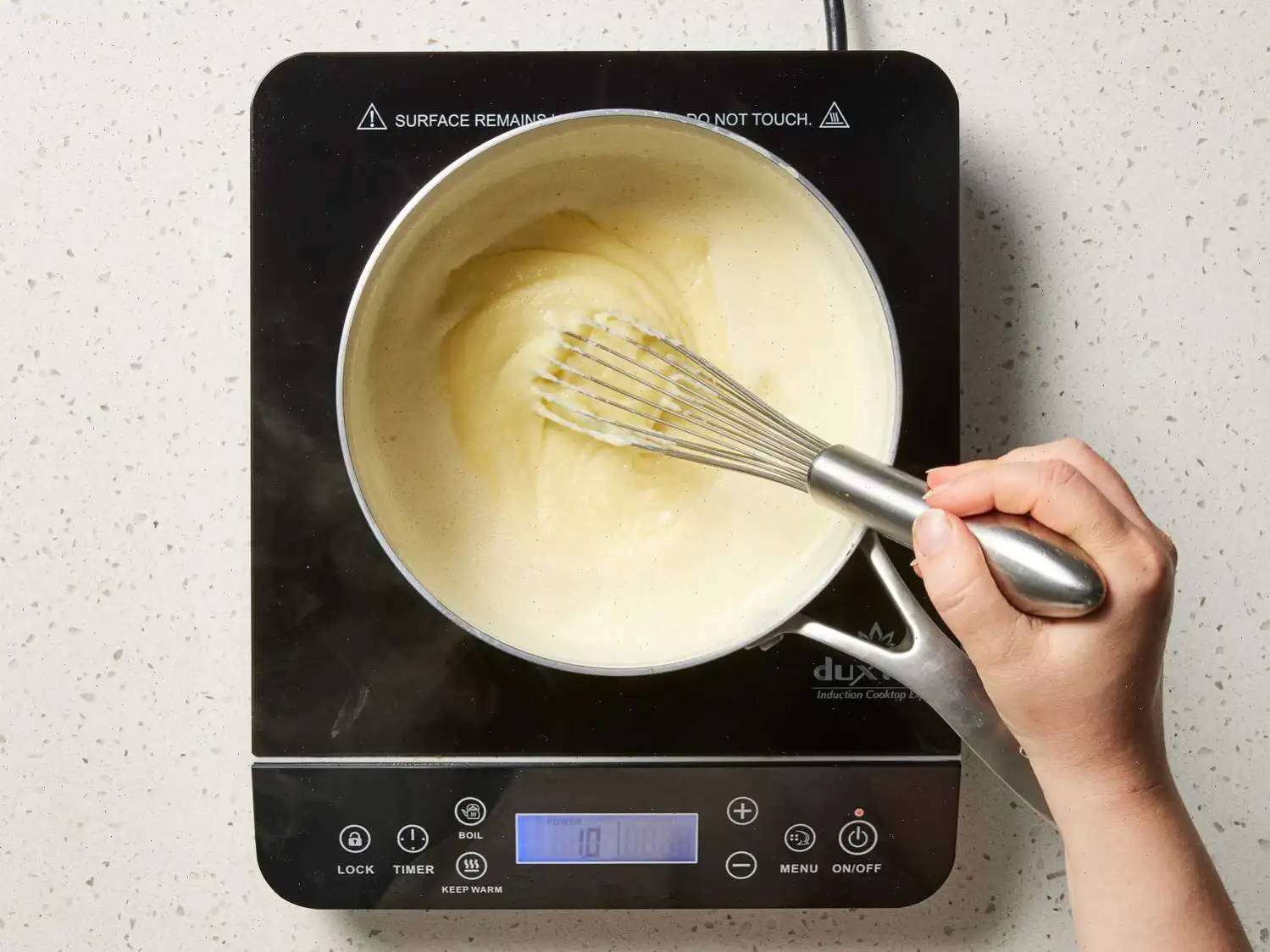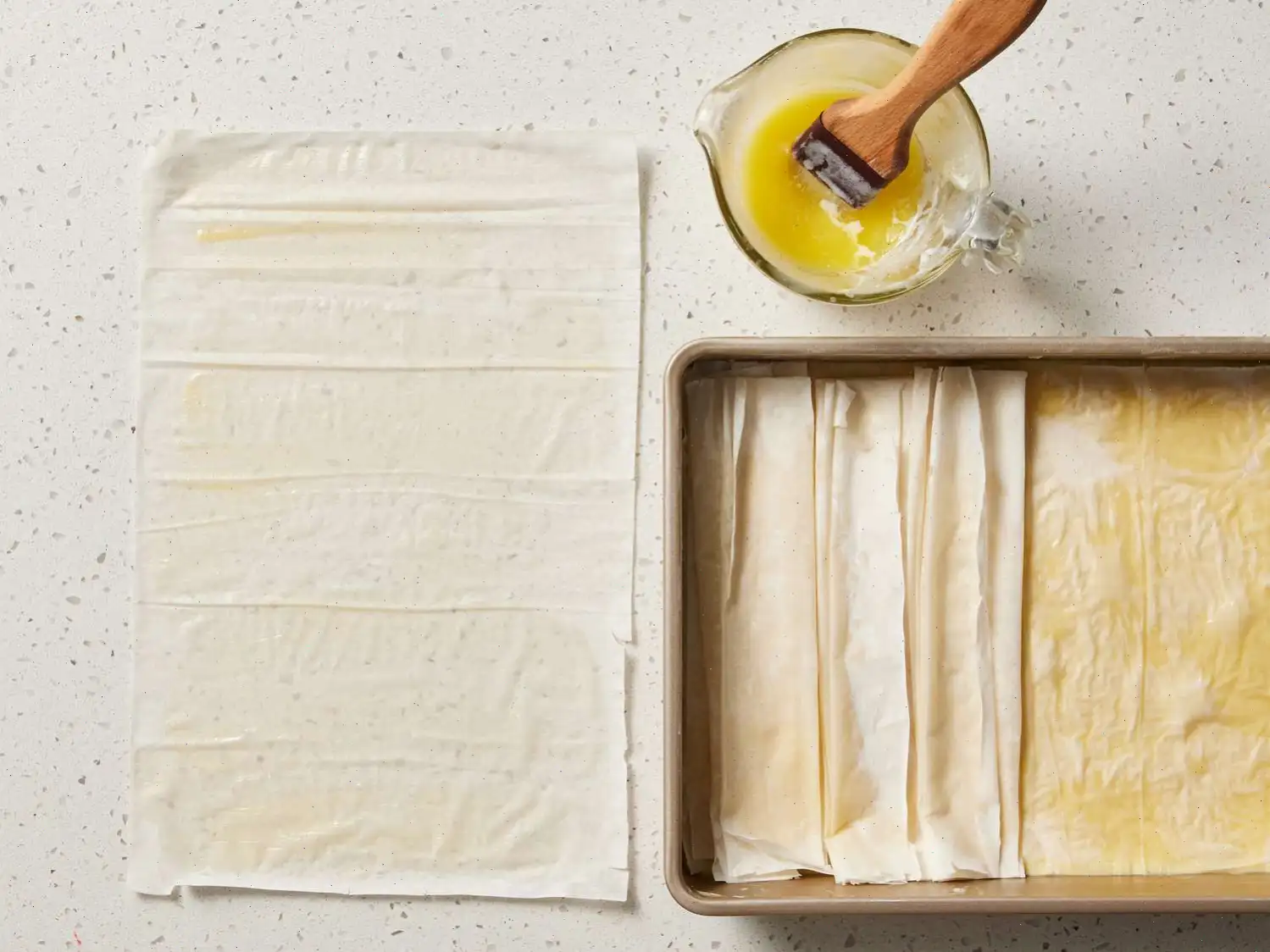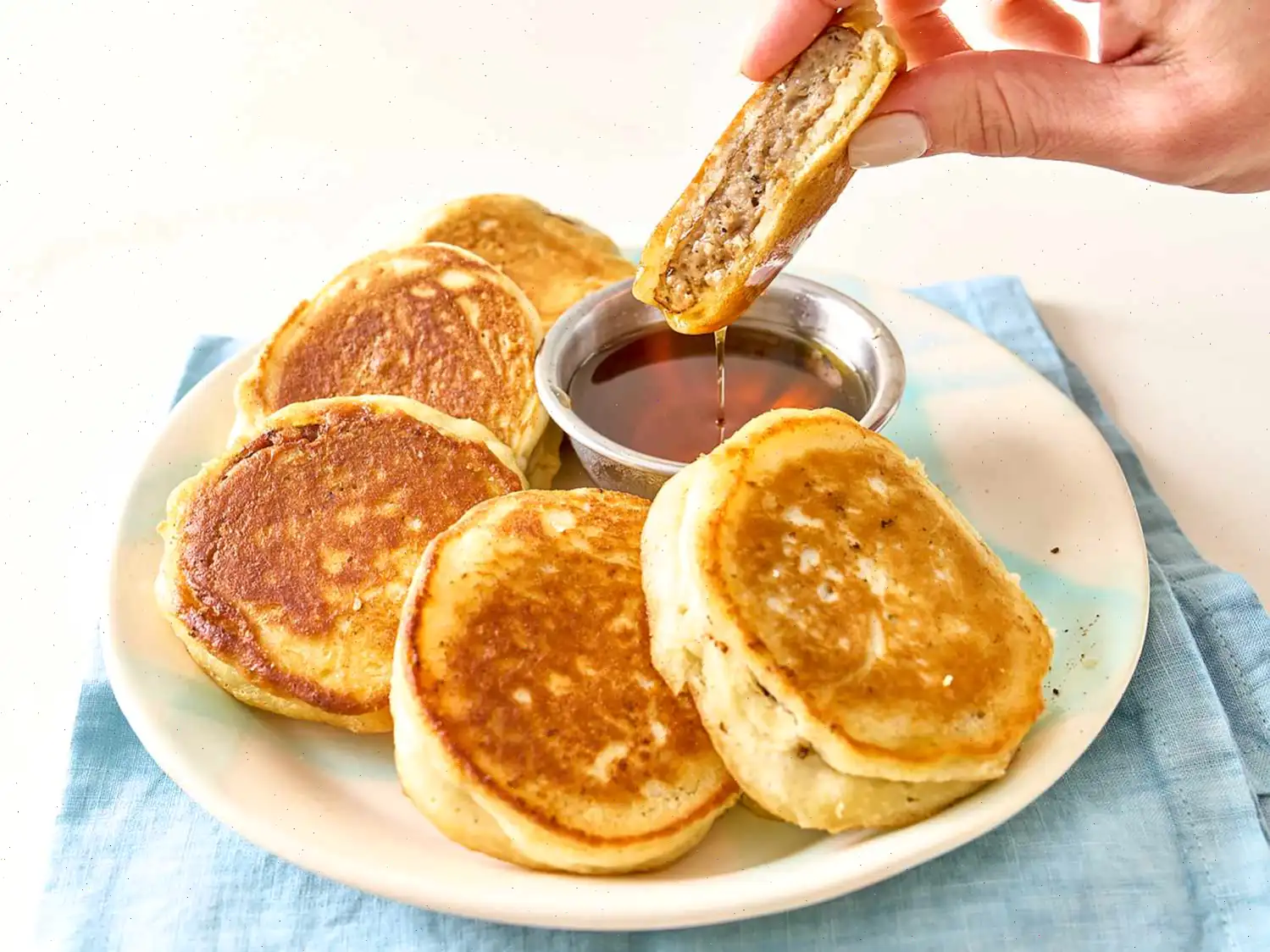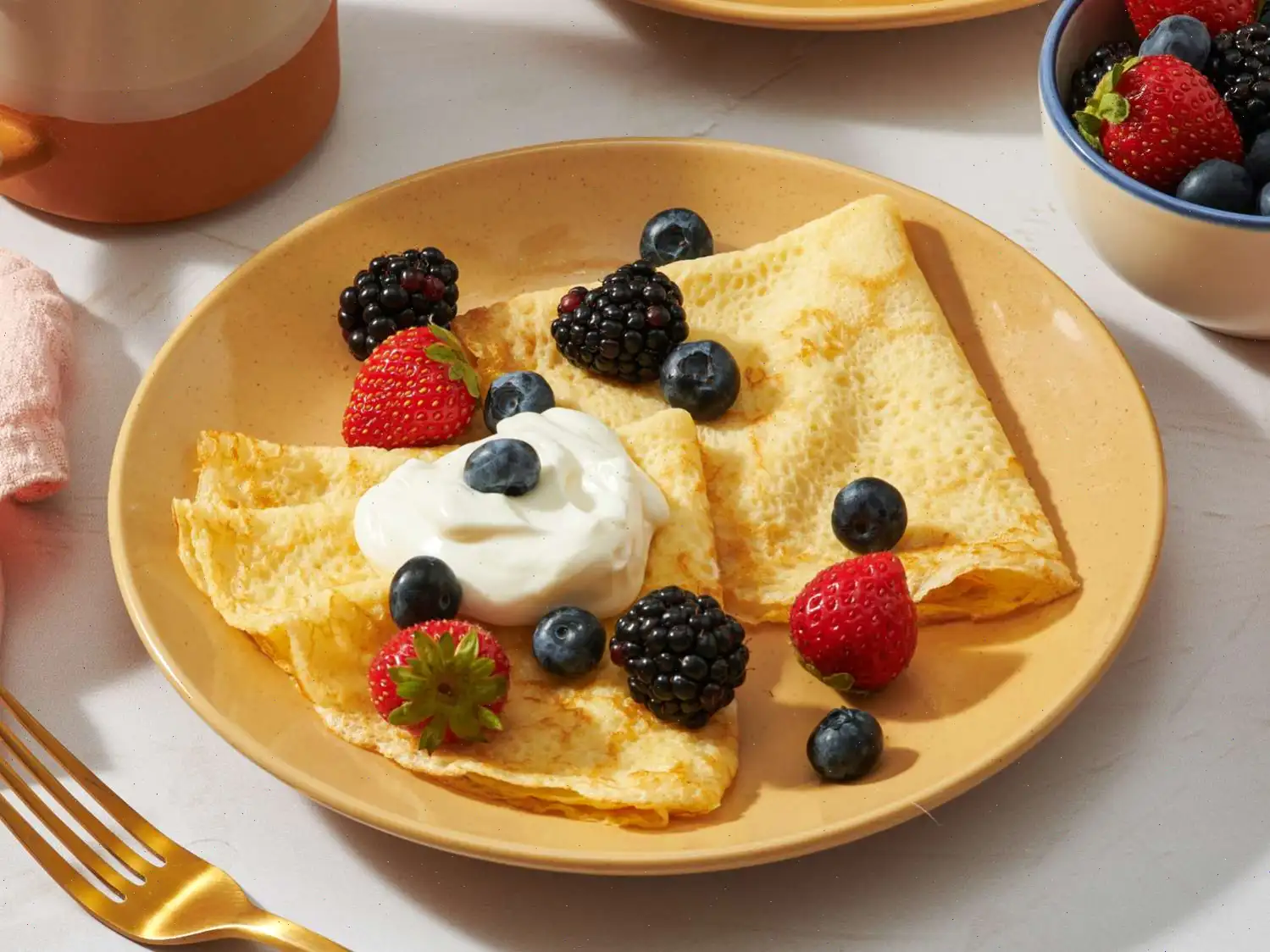
Bougatsa Recipe
Bougatsa is a delicious Greek pastry made with layers of crispy phyllo dough and a rich semolina custard filling. With its flaky texture, smooth custard, and delicate hints of lemon and vanilla, its a perfect treat for breakfast or dessert. Heres how you can make this delicious pastry at home.
Ingredients:
- 4 large eggs, at room temperature
- 2/3 cup white sugar
- 3 cups whole milk
- 1/2 cup semolina flour
- 1 cup cold unsalted butter, cubed
- 2 tablespoons packed grated lemon zest
- 2 tablespoons freshly squeezed lemon juice
- 1 1/2 teaspoons vanilla extract
- 3/4 cup unsalted butter, divided
- 18 (14x9-inch) frozen phyllo pastry sheets, thawed
- 2 teaspoons confectioner's sugar
- 1/8 teaspoon ground cinnamon
Instructions:
Step 1: Preheat your oven to 350F (175C). In a stand mixer, beat the eggs on medium speed using the whisk attachment until foamy, about 1 minute. Add the white sugar and continue beating until the mixture is thick and foamy, 4 to 5 minutes.
Step 2: While the eggs are beating, heat the milk in a large saucepan over medium-low heat, stirring occasionally until it begins to simmer.
Step 3: With the mixer on low speed, slowly pour the hot milk into the egg mixture, beating until fully combined, about 30 seconds.
Step 4: Return the milk mixture to the saucepan and cook over medium-low heat, whisking constantly, until the mixture begins to simmer and thickens slightly, 3 to 4 minutes.
Step 5: Gradually whisk in the semolina flour and cook, stirring constantly, until the mixture thickens to a porridge-like consistency, 1 to 2 minutes.
Step 6: Remove the saucepan from the heat and whisk in the cold butter, one tablespoon at a time, until fully emulsified, about 2 minutes. Stir in the lemon zest, lemon juice, and vanilla extract. Set the custard aside at room temperature, stirring occasionally.
Step 7: Brush the bottom and sides of a nonstick 13x9-inch baking pan with about 1 tablespoon of melted butter. Unfold the phyllo dough on a clean surface, covering it with a damp towel to keep it moist as you work.
Step 8: Layer 8 sheets of phyllo in the prepared baking pan, brushing each sheet lightly with melted butter before adding the next one. Spread the custard evenly over the phyllo layers.
Step 9: Place 2 more sheets of phyllo on top of the custard, brushing each with melted butter and stretching them to cover the sides of the pan.
Step 10: For the remaining 8 sheets of phyllo, one by one, lightly brush each with melted butter. Starting from one short end, fold each sheet accordion-style to form a long strip with 2-inch-wide pleats. Place each folded strip crosswise in the baking pan, with the pleats facing up. Repeat until the pan is completely covered.
Step 11: Bake in the preheated oven for 40 to 45 minutes, or until the pastry is golden brown and crispy.
Step 12: Remove the bougatsa from the oven and let it cool at room temperature for about 30 minutes. Once cooled slightly, dust the top with powdered sugar and cinnamon.
Step 13: Slice into squares and serve either warm or at room temperature.
Storage Tips:
Bougatsa can be stored in the refrigerator for up to 3-4 days in an airtight . To reheat, place in a 350F (175C) oven for 10-15 minutes, watching closely to prevent over-browning.
Helpful Tips:
- When using frozen phyllo dough, be sure to thaw it properly, either overnight in the refrigerator or following the package instructions for quicker thawing. Handle it gently as it can tear easily, but dont worry torn sheets can still be used.
- Keep phyllo sheets moist by covering the unused sheets with a damp towel as you work.
- For a flaky texture, brush each phyllo sheet lightly with melted butter before adding the next one.
Frequently Asked Questions:
How do I store Bougatsa? Store bougatsa in the refrigerator for about three or four days in an airtight . Reheat in a 350F (175C) oven for 10-15 minutes, or until heated through.
What are the best phyllo sheets to buy? We recommend Athens Phyllo Dough for this recipe, as it fits the pan better than Fillo Factory. If you only have Fillo Factory, just trim any excess dough that hangs over the pans edges to prevent burning.
Can I add other ingredients to Bougatsa? Feel free to swap the lemon zest and juice for orange zest and juice for a citrus twist. You can also experiment with spices like nutmeg or cardamom in the custard for added flavor.
Whats the difference between Bougatsa and Galaktoboureko? Both pastries feature phyllo dough and semolina custard, but Galaktoboureko is soaked in a citrusy syrup, while Bougatsa is simply dusted with powdered sugar and cinnamon.
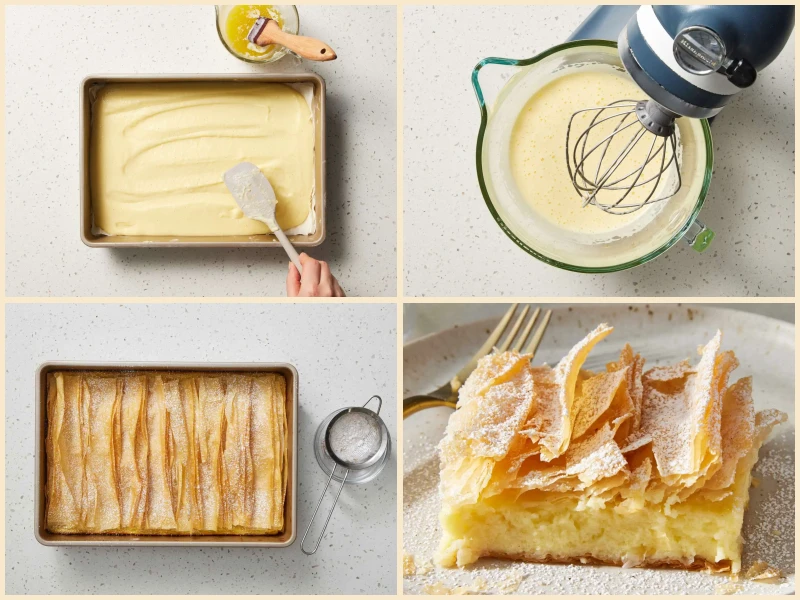
The Rich History of Bougatsa
Bougatsa is a cherished Greek pastry with origins tracing back to the Byzantine Empire, when layers of thin dough filled with sweet or savory fillings became a staple in local diets. Its name is believed to derive from the Byzantine word pogatsa, which itself has roots in the Roman focaccia, reflecting the long tradition of dough-based delicacies in the region. Over centuries, bougatsa evolved into the sweet, custard-filled treat we know today, commonly enjoyed as a breakfast item or afternoon snack. The combination of crisp phyllo and creamy semolina custard has made it a beloved comfort food throughout Greece.
Regional Variations and Characteristics
Different regions of Greece have developed unique takes on bougatsa. In Thessaloniki, it is typically served warm with a generous dusting of powdered sugar and cinnamon. Crete offers a variation where local cheeses or herbs are incorporated for a savory twist. Coastal regions sometimes include hints of citrus in the custard, using lemon or orange zest to enhance the flavor. These regional differences highlight the pastrys adaptability and the importance of local ingredients in Greek cuisine.
How Bougatsa Differs from Similar Pastries
Bougatsa is often compared to galaktoboureko, another Greek dessert made with phyllo and semolina custard. The primary distinction lies in the finishing: galaktoboureko is drenched in a sweet citrusy syrup, classifying it as a siropiasta dessert, whereas bougatsa is simply dusted with powdered sugar and cinnamon. This subtle difference gives bougatsa a lighter, less sticky texture, making it ideal for breakfast or a snack without being overwhelmingly sweet.
Typical Serving Settings
Bougatsa is traditionally served in cafs across Greece, often accompanied by a cup of strong Greek coffee. Street vendors and bakeries also sell it fresh from the oven, allowing locals and tourists alike to enjoy its flaky texture and creamy filling. It is common to find bougatsa at morning markets or during casual gatherings, where it is enjoyed warm and sliced into portions for sharing.
Interesting Facts and Culinary Insights
- The accordion-style folding of the top phyllo sheets, often seen in modern recipes, helps create an extra-crispy texture that contrasts beautifully with the smooth custard.
- Bougatsa is surprisingly versatile; while the classic version is sweet, savory fillings including minced meat, cheese, or spinach are also traditional in some regions.
- It is often enjoyed immediately after baking, but can be stored for a few days in the refrigerator and reheated without losing its characteristic crispiness.
- While commonly associated with Greek cuisine, bougatsa has influenced pastries across the Balkans, reflecting centuries of cultural exchange and culinary adaptation.
- The combination of simple ingredientsphyllo, semolina, butter, and sugardemonstrates how minimal components can create complex flavors and textures that delight the senses.
Whether enjoyed as a sweet breakfast treat or a mid-day indulgence, bougatsa continues to hold a special place in Greek culinary tradition. Its blend of history, regional variations, and delightful textures ensures that this pastry remains timeless and universally loved.
You can listen to this recipe in AI audio format. Simply click the play button below to listen to the content in a format that suits you best. It’s a great way to absorb information on the go!
FAQ about Bougatsa Recipe
Comments
Kevin Hernandez
05/21/2025 11:29:11 PM
This recipe is authentic and I absolutely adore the way the phyllo sheets are folded accordion-style, creating an irresistibly crispy texture!



